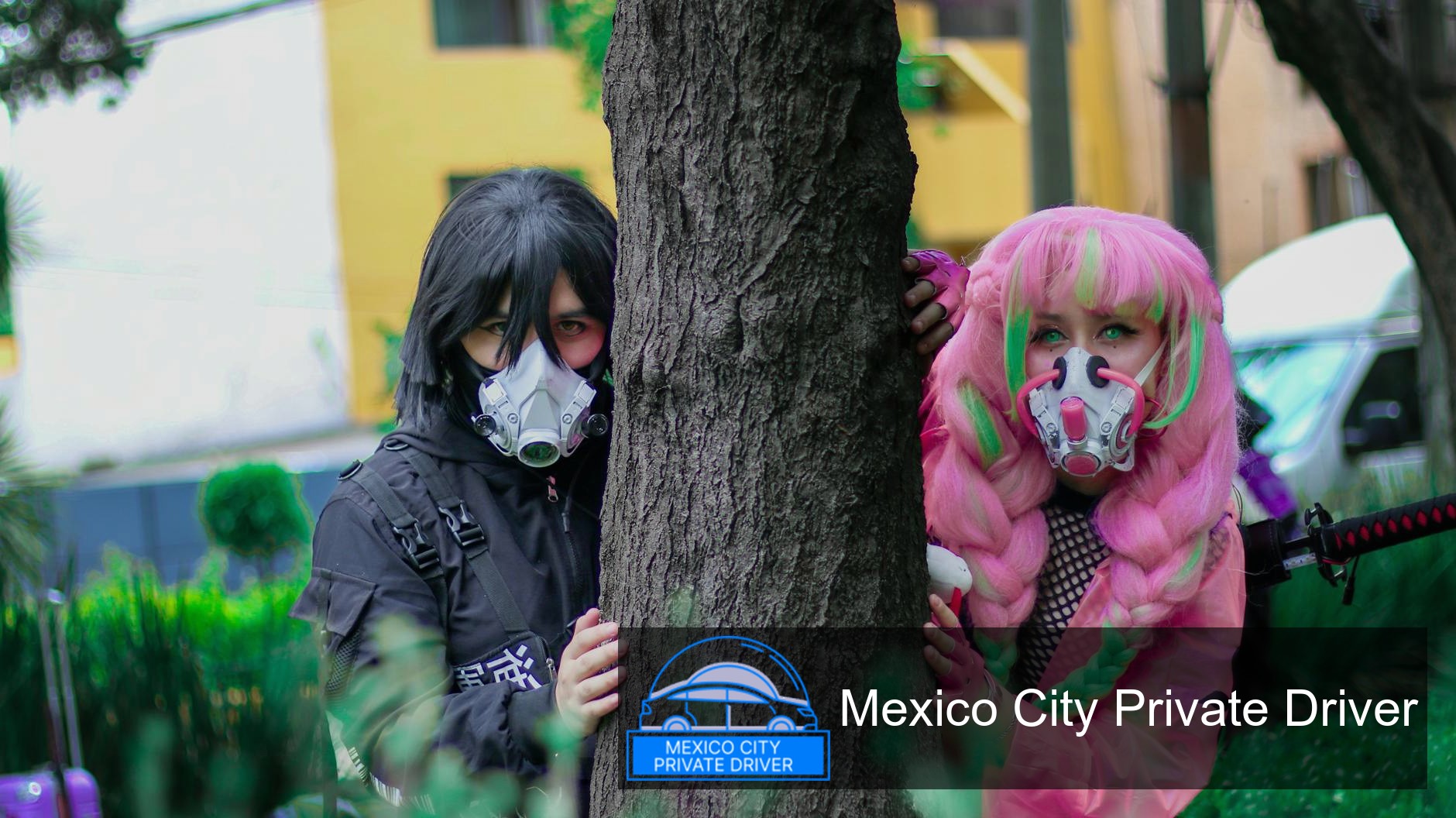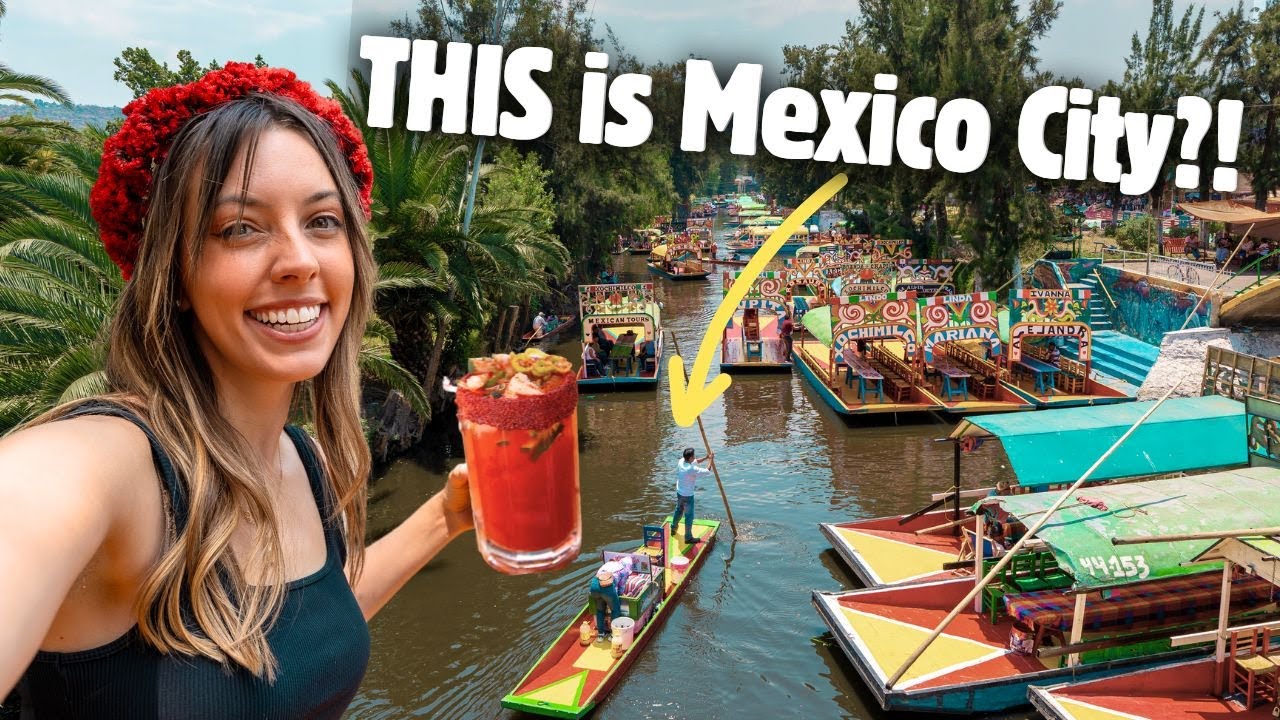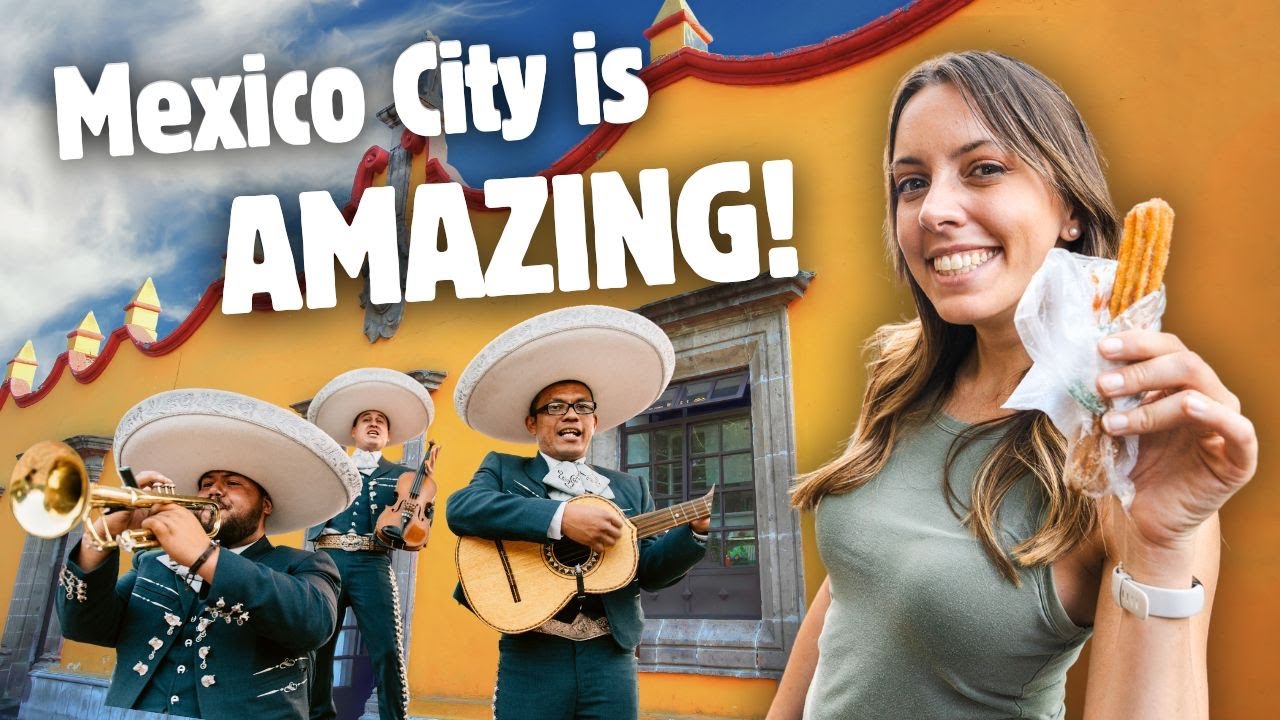TL;DR Museo Jumex is Mexico City’s forward‑thinking contemporary art hub — free to enter, open Tue–Sun (Sat until 7pm), and hosting a strong 2025 lineup: Museo Jumex in Residence (Part 1 through 31 Aug 2025), followed by a reopening on 13 Sep with major shows including Works from the Colección Jumex and Gabriel de la Mora’s La Petite Mort (late Sep 2025–Feb 2026). Plan ahead: check installation closures, book guided tours for groups, use lockers and bike parking, and arrive by Metro Line 7 (San Joaquín or Polanco) or Ecobici. (Fundación Jumex — exposiciones, visita, home)
Museo Jumex Mexico City: Your Ultimate Guide to Exhibitions and Events in 2025
I write this from years of visiting exhibitions, attending openings, and guiding friends through Mexico City’s contemporary‑art scene. In 2025 Museo Jumex is one of the museums I recommend first to anyone curious about cutting‑edge art and ambitious museum programming. Below I explain what’s on, why it matters, how to plan your visit, and practical tips that saved me time and lines more than once.
Why Museo Jumex matters in 2025
Museo Jumex is Fundación Jumex Arte Contemporáneo’s flagship platform. Since opening in November 2013 it has positioned itself as a laboratory for experimentation — not just a place to hang pieces, but to test programs, research, and public pedagogy. That institutional mission shows up in everything from the selection of contemporary artists to the public programs that accompany exhibitions (Fundación Jumex — Museojumex, Historia).
In 2025 the museum continues that role: presenting in‑house commissions and off‑site collaborations, rotating the Colección Jumex, and staging single‑artist shows that interrogate medium and form. Because the museum aims to “familiarize audiences with the concepts and contexts that inform current art practice,” the exhibitions are often layered and reward time on site and a guided tour (Fundación Jumex — museojumex, exposiciones).
What’s on in 2025 — highlights and timeline
Key dates and shows I rely on when I plan visits:
- Museo Jumex in Residence (Part 1): on view 21 May — 31 Aug 2025 (on site). This program highlights current research and emerging practices.
- Museum installation closure and reopening: the museum closes periodically to install exhibitions; in 2025 it indicated a reopening on 13 Sep at 10:00 AM after installations (Home page notice).
- Works from the Colección Jumex: 13 Sep 2025 — 08 Feb 2026 (rotational presentation of the collection).
- Gabriel de la Mora: La Petite Mort — 25 Sep 2025 — 08 Feb 2026 (single‑artist exhibition; expect sculptural or conceptual work given the artist’s profile).
- Elsa‑Louise Manceaux: Voice Notes and THE TIGER’S COAT — both listed for 25 Sep 2025 — 08 Feb 2026 (multiple solo projects opening in late September).
- Museo Jumex in Residence (Part 2): an off‑site component running 10 Sep — 01 Nov 2025.
These dates and program types are published by Fundación Jumex on their exhibitions and news pages; exhibition lengths and exact gallery allocations can change during installation windows, so I always recheck the museum calendar before heading out (Fundación Jumex — exposiciones; home).
What to expect inside
The Jumex building is designed to be flexible: large galleries that accommodate ambitious installations and an educational program infrastructure that supports talks, screenings, and workshops. The museum’s public programs and guided tours are integral to the experience; they help decode contemporary practices that can be dense on first glance (Fundación Jumex — museojumex).
- Scale: expect large‑format works and immersive installations in major galleries.
- Curatorial approach: a mix of local and international voices, often research‑driven and conceptually rigorous.
- Visitor facilities: bookstore (specialized in modern and contemporary art), a cafe/restaurant with long hours, free lockers on floor -1, bike racks, and accessibility services (Fundación Jumex — visita).
Comparing the major 2025 shows (quick reference)
| Exhibition | Dates | Location | What to expect |
|---|---|---|---|
| Museo Jumex in Residence (Part 1) | 21 May — 31 Aug 2025 | On site | Emergent research projects, experimental formats, rotating installations |
| Museo Jumex in Residence (Part 2) | 10 Sep — 01 Nov 2025 | Off‑site | Extended residency outputs; public interventions beyond the building |
| Works from the Colección Jumex | 13 Sep 2025 — 08 Feb 2026 | On site | Selections from the permanent collection; broader historical context of acquisition |
| Gabriel de la Mora: La Petite Mort | 25 Sep 2025 — 08 Feb 2026 | On site | Solo show; refined objects and conceptual considerations of materiality |
| Elsa‑Louise Manceaux: Voice Notes | 25 Sep 2025 — 08 Feb 2026 | On site | Sound and installation practices; intimate listening experiences |
How I recommend experiencing a Jumex day
If you have one visit (2–3 hours), here’s my usual flow based on what’s worked best:
- Arrive just after opening — weekdays are calmer. On Saturdays expect a livelier crowd since the museum stays open until 7pm (Home/Visita pages).
- Start with the major temporary exhibition to see the large installations before fatigue sets in.
- Take a guided tour when available — the curators or educators often provide context you won’t get from labels alone (guided tours are a regular offering; groups can book ahead via the museum’s groups email).
- Browse the bookstore and pick a catalog; jump back into any gallery corners you skipped.
- Finish with coffee — the on‑site restaurant has extended hours and is convenient for debriefing your impressions (Visita).
Events and public programs to watch for
Museo Jumex programs range from curator talks, screenings, and workshops to school and community outreach. The institution emphasizes pedagogy and research, so many of the exhibitions are accompanied by conversations and programming that situate the work in broader debates.
Practical tip: sign up for the museum newsletter or check the “View the program” page on the Fundación Jumex site before a planned visit. I often discover a talk or walkthrough that makes the exhibition click for me (Fundación Jumex — museojumex).
Practical Guide
Concrete steps to plan a smooth visit to Museo Jumex:
- Check the official calendar. Confirm the specific dates for the shows you want to see — Jumex posts installation closures and reopening dates (Home; Exposiciones).
- Confirm opening hours: Tue–Fri 10:00–17:00; Sat 10:00–19:00; Sun 10:00–17:00; Monday closed. Museum admission is free and no reservation is required, but special events sometimes require registration (Visita; Home).
- Decide transit: use Metro Line 7 (San Joaquín or Polanco stations) or Ecobici (stations 197, 240, 462). There are bike racks in front of the museum by the train tracks (Visita).
- If you’re arriving in a group, email [email protected] to request a guided tour; for general info use [email protected] or phone +52 (55) 5395 2615 / 2618 (Museojumex contact).
- Pack light — lockers on floor -1 are free and useful if you carry a bag or an umbrella (Visita).
- Bring comfortable shoes — galleries are generous and you’ll want to walk slowly.
- If accessibility is needed, note that all entrances and public areas are wheelchair accessible and the museum offers a limited number of wheelchairs; request assistance at the front desk on arrival (Visita).
- Plan for food: the museum restaurant/cafe opens early and stays open beyond gallery hours; double‑check their schedule if you want to dine in (Visita).
Accessibility, family visits, and group bookings
Museo Jumex has made an explicit effort to be accessible: wheelchair‑friendly entrances, public areas, and a limited pool of wheelchairs for visitors who request them. Educational programs are a core part of the institution’s mission, so families and school groups will usually find age‑appropriate offerings if you request them in advance (Museojumex; Historia; Visita).
Tickets, costs, and timing
Admission is free year‑round; that’s one of the best features of Museo Jumex and it makes repeat visits very affordable (Home; Visita). Because entries are free, the only costs you’ll encounter are for catalogues, purchases at the bookstore, food at the cafe, or paid special events/workshops that occasionally have a fee.
Tips from my experience (lessons learned)
- Check for installation closures: the museum sometimes closes to install major shows and posts reopen dates — I once arrived during an installation week and had to change plans (Home/Exposiciones).
- Saturday evenings are lively — if you prefer quieter visits choose weekday mornings.
- Guided tours enhance understanding: when I took an educator‑led walkthrough I left with a clearer sense of the curatorial thread between works.
- Use the lockers and return for a second pass: some shows reveal details on a slower second walk.
- Bring a notebook or voice memos: many exhibitions are conceptually dense and it helps to record a quick observation while it’s fresh.
FAQs
Is admission to Museo Jumex free?
Yes. Museo Jumex offers free admission. That applies to general entry to the galleries; special events or workshops may carry separate fees — check the program listings before you go (Home; Visita).
What are the museum hours in 2025?
Regular hours are Tuesday–Friday 10:00–17:00, Saturday 10:00–19:00, and Sunday 10:00–17:00. The museum is closed on Mondays. Note that the museum occasionally closes for installations; in 2025 it announced a reopening on 13 Sep at 10:00 AM following installation work (Home; Visita).
Do I need to reserve tickets in advance?
No reservation is required for general admission. For guided tours or large groups you should email [email protected] to arrange a visit (Visita; Museojumex).
How do I get there by public transit or bike?
Take Metro Line 7 to San Joaquín or Polanco. Ecobici stations near the museum include 197, 240, and 462; bike racks are available in front of the museum by the train tracks (Visita).
Is the museum wheelchair accessible?
Yes. All entrances and public areas are wheelchair accessible. The museum also has a limited number of wheelchairs available for visitors; request one at the front desk if needed (Visita).
Can I take photographs inside the galleries?
Photography policies can vary by exhibition and by artist request. The museum does not publish a single universal policy on the front page, so when in doubt ask at the front desk or consult the exhibition signage. If you need permission for professional photography, contact the museum’s press or events team in advance (if unsure, contact [email protected]).
Where can I eat and buy books?
Museo Jumex has an on‑site coffee/restaurant (extended hours) and a bookstore specialized in modern and contemporary art. Both are useful if you want to linger after the galleries (Visita).
How do I find out about talks, screenings, and workshops?
Check the museum’s program page or sign up for the newsletter. I often discover relevant public programs there and schedule my visits around curator talks or film screenings (Museojumex — program link).
Is there parking for cars?
The museum information highlights bike racks and public transit options; it does not prominently advertise on‑site car parking. If you’re driving, I recommend checking local parking apps or contacting the museum directly for advice — I usually opt for Metro or Ecobici to avoid parking hassles (Visita; info contact).
Final notes and contact details
Museo Jumex is one of those institutions where repeat visits pay off: exhibitions are curated with research and care, and the public programs deepen your understanding. My advice is to check the calendar before you go, prioritize guided tours for dense shows, and leave time to browse the bookstore. The museum’s free admission and robust programming make it an accessible way to see contemporary art in Mexico City.
Contact / practical info I use before every visit:
- Address: Miguel de Cervantes Saavedra 303, Colonia Granada, 11520 Mexico City (Museojumex listings).
- Email: [email protected] (general); [email protected] (guided tours and groups).
- Phone: +52 (55) 5395 2615 / +52 (55) 5395 2618 (Museojumex contact pages).
- Social: follow Museo Jumex on Instagram, X, Facebook, TikTok for program updates (Visita page).
If you’d like, tell me the dates you’re in Mexico City and which exhibitions interest you most — I’ll sketch a timed visit and recommend nearby neighborhoods to combine with your museum day.
Martin Weidemann is a digital transformation expert and entrepreneur with over 20 years of experience leading fintech and innovation projects. As a LinkedIn Top Voice in Digital Transformation and contributor to outlets like Forbes, he now brings that same expertise to travel and mobility in Mexico City through Mexico-City-Private-Driver.com. His focus: trustworthy service, local insights, and peace of mind for travelers.



